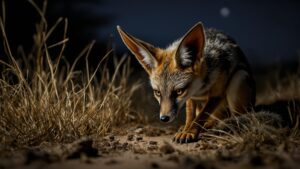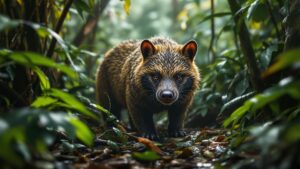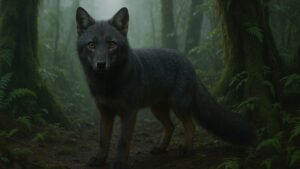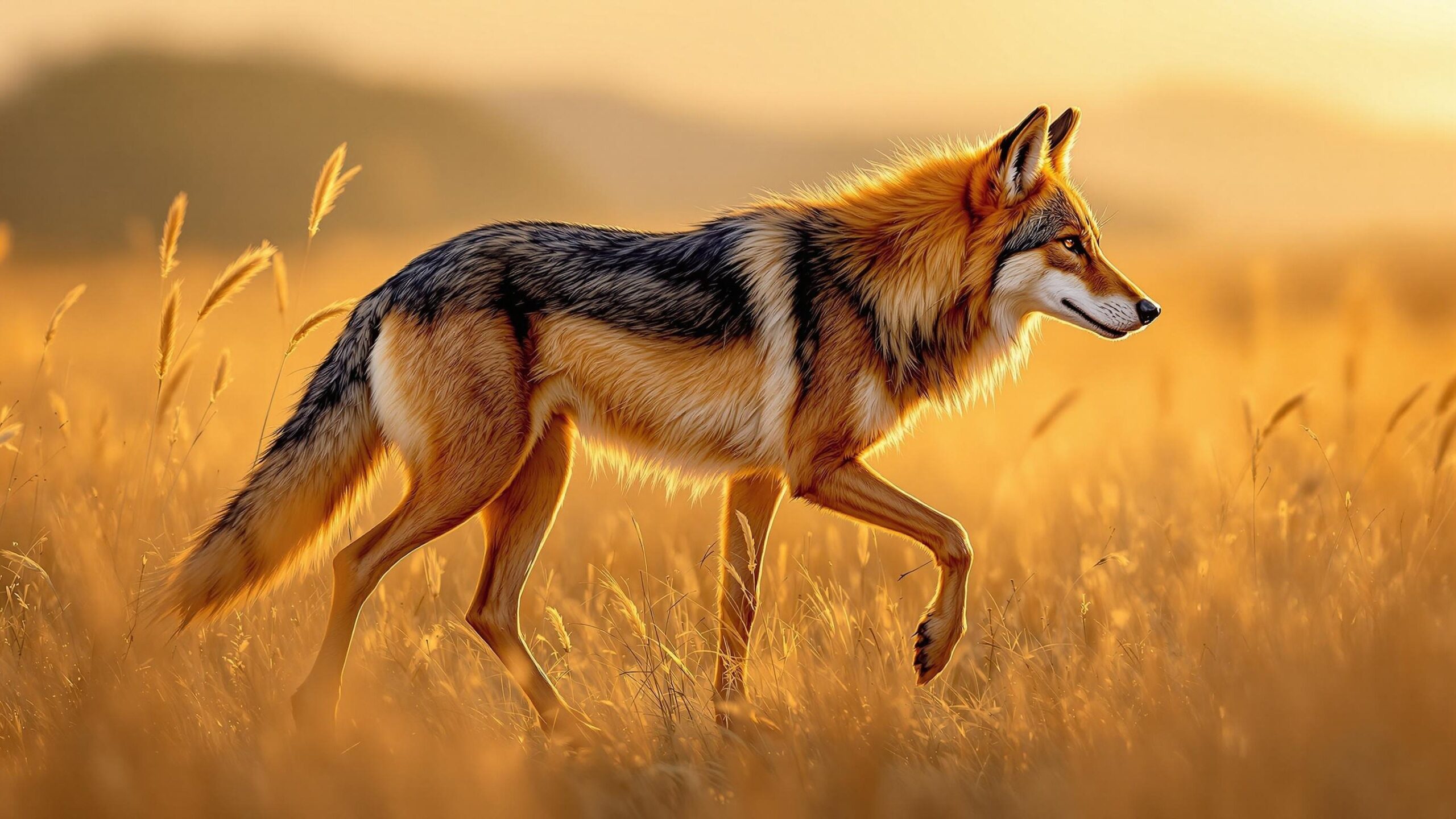Exotic Canids: The Wild, Rare, and Untamed Branches of the Dog Family Tree
Beneath the surface of familiar landscapes and beyond the standard stories of wolves, foxes, and coyotes, there lies a hidden world of wild canids that most people have never seen—or even heard of. They don’t howl at the moon in famous documentaries or lounge in suburban backyards. Instead, they thrive in far-flung forests, stalk prey in sun-scorched deserts, or dash through windswept grasslands in search of survival. These are the exotic canids—the rare, little-known, and often misunderstood members of the dog family who embody a rich tapestry of evolutionary brilliance.
From the singing sands of Southeast Asia to the high Andes of South America, exotic canids reflect nature’s power to shape creatures into extraordinary survivors. Each species tells a story of adaptation, resilience, and ecological importance. And in a world where biodiversity is shrinking, their stories are more critical than ever. To explore exotic canids is to embark on a global journey through evolution’s lesser-known experiments in wild canine design.

Bat-Eared Fox
Bat-Eared Fox (Otocyon megalotis): The Big-Eared Sentinel of the Savanna With ears like satellite dishes and a face that seems to blend the charm of a fox and the curiosity of a meerkat, the bat-eared fox (Otocyon megalotis) stands out as one of the most unusual and captivating canids in the world. Found across the grasslands and savannas of eastern and southern Africa, this fox is a master of adaptation,

Bush Dog
Bush Dog: The Mysterious Pack Hunter of the Rainforest Tucked deep within the dense rainforests and riverine habitats of Central and South America roams a little-known predator that few have ever seen in the wild—the elusive and enigmatic Bush Dog (Speothos venaticus). With a stout body, webbed feet, and a bear-like face, this carnivorous mammal looks nothing like your typical dog. Yet despite its unusual appearance, the Bush Dog belongs

Culpeo
Culpeo (Lycalopex culpaeus): The Andean Ghost of South America High in the windswept Andes and across the sun-drenched plains of South America roams a clever and elusive carnivore known as the Culpeo (Lycalopex culpaeus). Sometimes called the Andean fox or Andean wolf, this striking canid is neither a true fox nor a wolf, but rather a unique member of the South American wild dog lineage that has captivated researchers, farmers,

Darwin’s Fox
Darwin’s Fox (Lycalopex fulvipes): A Hidden Jewel of the South American Forest In the dense, misty temperate rainforests of southern Chile lives one of the world’s most elusive and endangered canids—the Darwin’s fox (Lycalopex fulvipes). Named in honor of the famed naturalist Charles Darwin, who first encountered it in 1834 during his voyage aboard the HMS Beagle, this small fox is both a biological rarity and a conservation concern. While

Falkland Islands Wolf
Falkland Islands Wolf (Dusicyon australis): The Phantom of the Southern Sea Long before the world became intimately aware of the fragility of isolated ecosystems, a unique predator roamed the windswept grasslands and coastlines of the Falkland Islands. Known to science as Dusicyon australis, the Falkland Islands wolf, also referred to historically as the Warrah, was the only native land mammal of this remote South Atlantic archipelago. It was not just

Maned Wolf
Maned Wolf: The Spectral Guardian of South America’s Grasslands The Maned Wolf (Chrysocyon brachyurus) is one of the most visually striking and ecologically unique canids in the world. Standing tall on elongated legs, crowned with a distinctive black mane, and trailing a fiery russet coat, the Maned Wolf resembles a surreal fusion of a fox, a wolf, and a deer. Despite its name, the Maned Wolf is neither a true

Raccoon Dog
Raccoon Dog (Nyctereutes procyonoides): The Masked Mammal of Two Worlds The raccoon dog, scientifically known as Nyctereutes procyonoides, is one of the most unique and misunderstood mammals in the animal kingdom. With its distinctively masked face, rounded ears, and fluffy fur, this animal often gets mistaken for a raccoon. But despite the resemblance, it’s not a raccoon at all. Instead, it belongs to the Canidae family, making it more closely

Sechuran Fox
Sechuran Fox (Lycalopex sechurae): The Desert Phantom of Northern Peru In the arid and silent stretches of northwestern Peru and southwestern Ecuador, a mysterious and elusive creature pads quietly through the dry forests and coastal deserts. It is the Sechuran fox (Lycalopex sechurae), a small South American canid that few people outside its native range have ever heard of—and even fewer have seen. Yet this fox plays a vital role
Understanding Exotic Canids: A Family Beyond the Familiar
The Canidae family includes over 35 living species, ranging from the domestic dog to wolves, jackals, foxes, and their wild relatives. What separates “exotic canids” from more familiar members is not just geography but obscurity and uniqueness. These are the species found far outside the spotlight of popular wildlife coverage—some shy and solitary, others vocal and pack-oriented, most little known to the general public. What they all share is a fascinating blend of traits that set them apart from typical canid archetypes. Biologically, canids are a marvel of evolutionary success. Most species have long limbs for distance travel, acute senses for tracking prey, and social structures that range from solitary living to complex pack hierarchies. Exotic canids stretch the boundaries of these norms—some hunt alone, others sing in unison, and some have adapted to climb trees, burrow deep underground, or survive with almost no water. By exploring these lesser-known relatives, we gain insight into the full scope of the canine family and its essential ecological roles. These animals are not only predators and scavengers but also ecosystem regulators, seed dispersers, and indicators of environmental health.
The Maned Wolf: The Ghost of South America’s Grasslands
In the twilight of Brazil’s cerrado, a tall, flame-colored figure glides silently through the tall grass. At first glance, it looks like a fox on stilts. But it is neither fox nor wolf—it is the maned wolf (Chrysocyon brachyurus), South America’s tallest wild canid and a creature of striking contrast. With long black legs, oversized ears, and a shaggy mane down its back, the maned wolf is built to stride above the grasslands and hear prey from a distance. Unlike true wolves, maned wolves are solitary and largely frugivorous. They feed on a mix of small animals and fruit, especially the lobeira, or “wolf apple,” a tomato-like fruit that makes up a significant portion of their diet. Their urine has a potent skunky odor, used for territory marking and long-range communication. Despite their unique appearance, maned wolves are shy and avoid human contact. Habitat loss and road mortality are their biggest threats, but conservation areas in Brazil, Paraguay, and Bolivia are helping secure their future. As the ambassador of South America’s savanna ecosystem, the maned wolf is a symbol of wild elegance on long legs.
The Dhole: Asia’s Whistling Pack Hunter
In the dense forests of India, Bhutan, and Southeast Asia lives a wild dog whose voice sounds more like a bird’s song than a predator’s growl. The dhole (Cuon alpinus), also known as the Asiatic wild dog or whistling dog, is one of the most socially cohesive and successful pack hunters on Earth. With reddish coats, bushy tails, and expressive eyes, dholes blend into their wooded surroundings like ghosts. Dholes form packs of 6 to 12 individuals, though larger groups are not uncommon. They hunt cooperatively, often taking down prey much larger than themselves, such as deer, wild boar, and even young buffalo. Their vocal communication is complex, relying on high-pitched whistles, chirps, and yips that can travel through thick forest undergrowth. They play a vital role in maintaining prey populations and forest health, but their populations have plummeted due to habitat loss, disease transmission from domestic dogs, and historical persecution. Still, they persist in fragmented pockets across South and Southeast Asia, where conservationists work to understand and protect their complex social lives and ecological functions.
The Bat-Eared Fox: The Insectivore with Radar Ears
In the arid grasslands and savannas of East and southern Africa, the bat-eared fox (Otocyon megalotis) has carved out a niche unlike any other canid. This small, grayish fox is named for its enormous ears—proportionally larger than any other wild dog relative—and uses them not just for hearing, but for thermoregulation and predator awareness. What sets the bat-eared fox apart most dramatically is its diet. While most canids are omnivores or carnivores, the bat-eared fox is a specialized insectivore, consuming massive quantities of termites and beetles. A single individual can eat tens of thousands of insects in a night, using its acute hearing to detect the subtle rustle of movement underground. Socially, bat-eared foxes are unusual among canids. Males play a prominent role in pup-rearing, sometimes even more than females. After the young are born in a burrow, the male guards them while the female forages. This cooperative parenting and dietary specialization make bat-eared foxes a key piece in their ecosystem’s pest control system—and one of the most unique wild canids in the world.
The Bush Dog: The Water-Loving Pack Hunter of the Amazon
Deep in the tropical forests of South and Central America lives a dog so elusive that it was once thought to be a myth. The bush dog (Speothos venaticus) is a short-legged, web-footed canid with a stout body and thick reddish fur. Despite its awkward appearance, the bush dog is a proficient swimmer and an extremely effective pack hunter. Bush dogs are rare to see in the wild, but they are believed to live in extended family groups and hunt cooperatively, using teamwork to flush prey such as armadillos, pacas, and even large rodents into water, where their swimming skills give them the advantage. Unlike most forest carnivores, they rely heavily on aquatic terrain and will travel great distances along riverbanks. Bush dogs are a conservation concern due to deforestation, disease, and low population densities. They are difficult to study and even harder to protect in fragmented landscapes. But their very existence speaks to the incredible diversity of the canid family, and their role as semi-aquatic hunters fills a niche few other mammals can match.
The Raccoon Dog: The Masked Canid of East Asia
In the forests of Japan, China, and Korea, a strange figure waddles through the underbrush, resembling a cross between a raccoon and a small bear. This is the raccoon dog (Nyctereutes procyonoides), one of the few canids capable of climbing trees—and the only one known to hibernate in colder regions. Despite the name, raccoon dogs are true canids, more closely related to foxes than raccoons. Their thick fur, masked faces, and rounded bodies help them survive harsh winters, and they are opportunistic feeders, eating insects, frogs, fruit, and carrion. They mate for life and raise their pups together in forest dens or hollow logs. Raccoon dogs are also known for their presence in Japanese folklore, where they are often confused with the mythical tanuki—playful, shapeshifting spirits known for causing mischief and joy. While in their native ranges they are ecologically important scavengers, introduced populations in parts of Europe have raised concerns about competition with native species and disease spread.
The African Wild Dog: The Painted Nomad of the Continent
Though slightly better known than others in this list, the African wild dog (Lycaon pictus) still qualifies as an exotic canid due to its rarity and specialized lifestyle. Also called the painted wolf, this species is known for its striking patchwork coat, large round ears, and incredible teamwork. African wild dogs live in tightly knit packs of 5 to 30 individuals and rely on their extraordinary social bonds to hunt and care for one another. Their hunts are legendary—using speed, coordination, and relentless stamina to bring down antelope and other large prey with an efficiency unmatched in the animal kingdom. Despite their prowess, African wild dogs are among the most endangered carnivores in Africa. Their roaming habits bring them into conflict with roads, fences, and humans, and their susceptibility to diseases from domestic dogs compounds the threat. Conservation efforts focus on creating wildlife corridors and raising awareness about this highly intelligent and socially complex predator.
The Sechuran Fox and Darwin’s Fox: South America’s Secret Survivors
In South America, several small, elusive canids fill unique ecological niches. The Sechuran fox (Lycalopex sechurae), found in the dry forests of coastal Peru and Ecuador, survives in one of the most water-scarce environments on Earth. It feeds on fruit, insects, and small vertebrates, and it’s primarily nocturnal—emerging at night to forage in silence. Darwin’s fox (Lycalopex fulvipes), on the other hand, lives in the temperate rainforests of southern Chile and the island of Chiloé. It’s a critically endangered species, with only a few hundred individuals remaining. Small, dark-coated, and secretive, Darwin’s fox is a symbol of conservation in one of Earth’s last temperate wildernesses. These canids are vital links in their ecosystems, helping control prey populations and disperse seeds. Their survival hinges on protecting their habitats and increasing public awareness of their importance.
Why Exotic Canids Matter: Ecological Roles and Global Lessons
Exotic canids are not just rare curiosities—they are essential threads in the fabric of their respective ecosystems. As predators and scavengers, they regulate prey populations, limit disease transmission, and contribute to ecosystem resilience. Their diversity—from tree climbers to insect specialists to aquatic hunters—demonstrates the evolutionary flexibility of carnivorous mammals. They also reflect broader environmental changes. Because many exotic canids live in fragile habitats or rely on complex social systems, they are especially vulnerable to habitat fragmentation, climate change, and human disturbance. Monitoring and protecting these species often helps safeguard entire ecosystems and the many other organisms within them. Additionally, studying exotic canids teaches us about cooperation, niche specialization, and evolutionary innovation. Their behaviors—like dhole pack dynamics or bat-eared fox parenting—expand our understanding of animal intelligence and adaptation.
Echoes from the Edge of the Wild
The world of exotic canids is vast, wondrous, and still largely unexplored. In forests, deserts, grasslands, and riverside jungles, these creatures live out quiet, essential lives. They may not roar like lions or dazzle like tropical birds, but their stories are no less dramatic, and their contributions no less vital. By learning about exotic canids, we uncover stories of survival against the odds, of creatures that exist at the fringes of ecosystems—and sometimes the fringes of human knowledge. They are testaments to the creativity of evolution and the delicate balance of life on Earth.
Now is the time to dive deeper. Explore the Amazon trails of the bush dog. Trace the howls of the dhole in Himalayan valleys. Follow the long-legged stride of the maned wolf across the Brazilian cerrado. The wild is not just out there—it’s filled with voices we have yet to fully hear.

